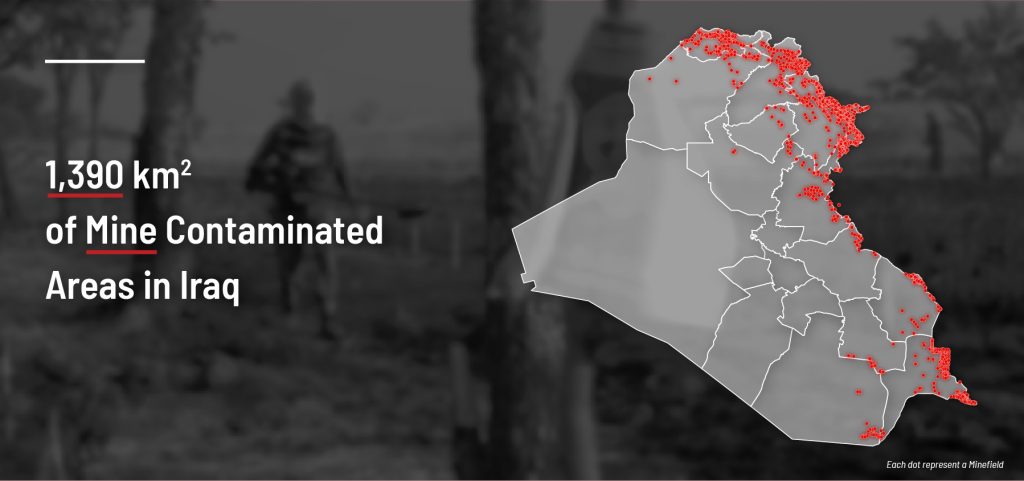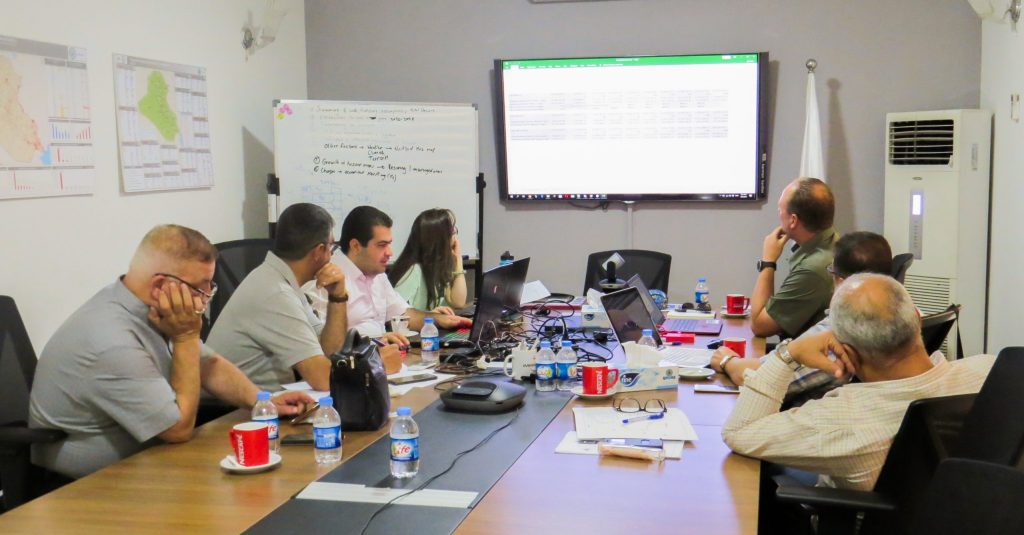The widespread of landmines and unexploded ordnance (UXO), makes the republic of Iraq the most contaminated country in the world. Currently, 8.5 million people in Iraq are vulnerable to the risk of landmines and Improvised Explosive Devices (IEDs), and 1,390 Km2 of land is rendered useless solely due to landmine contamination, including agricultural land and urban areas.
In view of the severity of the contamination, in 2008, the republic of Iraq acceded to the Anti-Personnel Mine Ban Convention (APMBC) to stop the use, stockpile, and transfer of Anti-Personnel (AP) Mines and to destroy the remaining AP Mines by 2018. However, this goal could not be reached because of the war against ISIS, which not only impeded the clearance activities but caused further destruction and contamination.
In this context, the Iraqi government’s commitment to the treaty entails several obligations. That includes submitting scheduled reports of their updated work plan to the Article 5 committee of the APMBC.




